Trinidad Roldan Rojas was just four years old when her family fled political persecution in South America to start a new life in Tasmania.
It was 1988, and Trinidad’s father, Gaston – a leathermaker – had previously spent two years in jail, tortured and incarcerated under the Pinochet regime. His crime, he says, was “fighting against injustice, fighting for human rights and the return of democracy”.
“My mother protested and fought for his release every single day,” Trinidad, 41, recalls.
Gaston was eventually released from prison and was forced to flee Chile because he feared for his life and that of his wife, Nancy, and their young daughter.
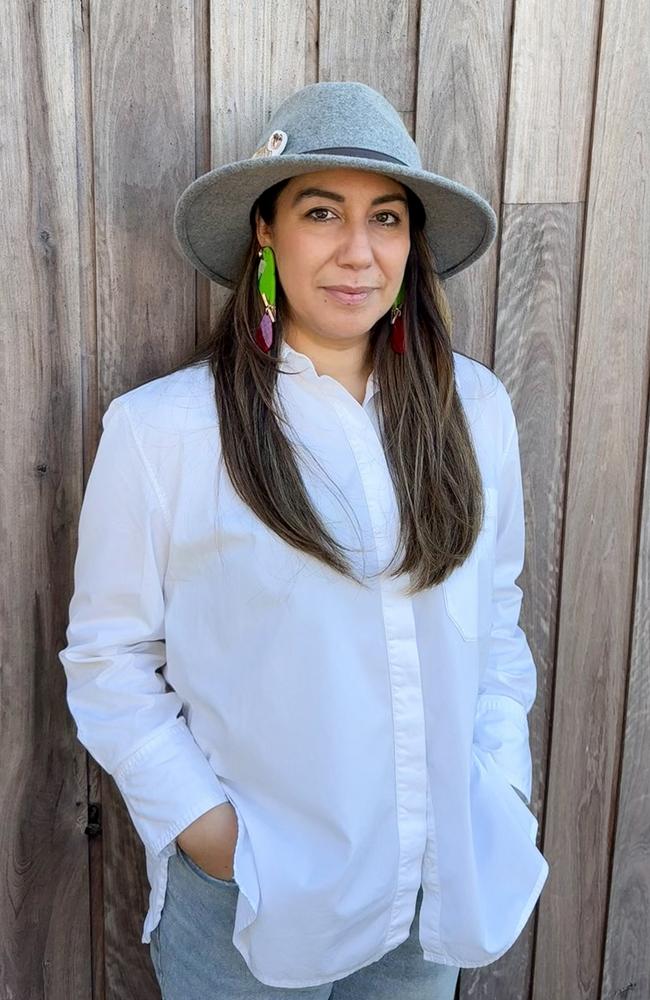
After a long series of flights – which included stopovers at Easter Island, Papeete, Auckland, Sydney and finally Hobart – the family arrived as refugees in a place they knew nothing about.
“When we first found out we were coming my mum was really scared because she thought we were going to Transylvania – she’d never heard of Tasmania,’’ Trinidad says.
Despite her young age, Trinidad can clearly remember the moment she first set eyes on her new homeland.
“I still remember the awe I felt seeing towering kunanyi for the first time, standing tall like a guardian over this new land, and the streets – so different from the dirt paths of my childhood,’’ she recalls.
The family settled in West Hobart and Trinidad has fond memories of attending Barclay Kindergarten, in Bathurst St, where her artistic talents were first recognised as one of her drawings was chosen to form part of the logo for the school’s uniform (the school closed in 1992).
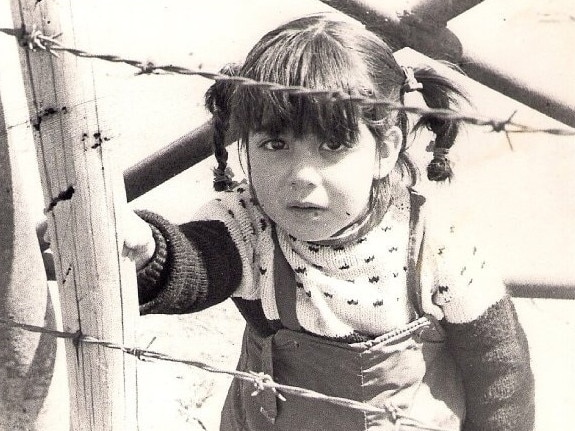
And while Trinidad always loved art during her school years that followed at Sacred Heart College – and was inspired by her dad’s artistic talents which over the years have included leatherwork and leadlighting – it wasn’t until about seven years ago that she decided to focus more heavily on exploring her love of designing and creating.
Trinidad started a small business making – and selling – leather goods initially, including bags, wallets and custom dog collars, which was inspired by her love for her own pets.
This led her to make custom resin dog tags and that eventually led the earring-lover to experiment with making jewellery, with her current business, Galactic Burrito, launching in April 2023.
Trinidad designs and makes all her acrylic statement earrings and brooches by hand, working with a laser cutter in her home studio when she’s not working full-time as a public servant.
Her designs – which she sells at Salamanca Market most Saturdays and also online at galacticburrito.com.au – are based on her connection to nature and also aim to capture and celebrate moments through time. She describes her small-batch creations as “intricately-crafted earrings incorporating a beautiful fusion of lutruwita/Tasmanian vistas and Chilean inspirations’’.
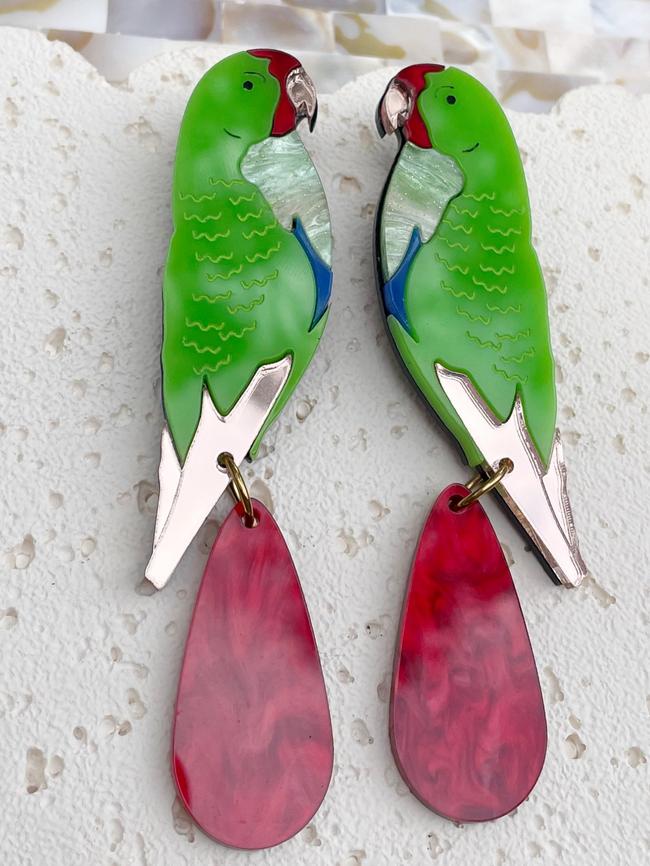
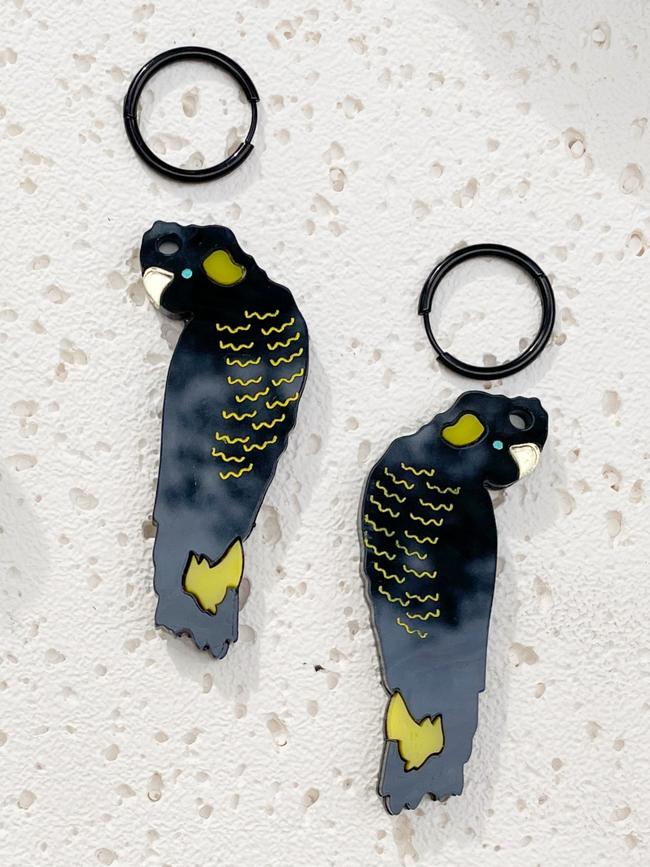
“I think when you are creative and you make things, you find inspiration in the beauty around you and it always pops into your head that this could be an earring, or a brooch, or a bag, or whatever,’’ she says.
Trinidad’s range includes Tasmanian animals – devils, echidnas, wombats, whales and handfish – as well as a range of birds such as masked owls, swift parrots, cockatoos and wedge-tailed eagles.
She recently purchased a home in Moonah with her partner Sam, but previously lived in Lenah Valley where she took inspiration from the New Town rivulet as well as the birds that inhabited surrounding bushland.
Trinidad remembers birds as part of her earliest memories of arriving in Tasmania.
“We were welcomed by Joanne and George, our kind sponsors, who made us feel at home in our tiny apartment in Warwick St,’’ Trinidad recalls.
“The wind was wild, the birds were singing, and it felt like a new chapter was beginning.’’
Some of her jewellery features bold geometric designs – inspired by Trinidad’s love of colour … she can still remember standing at the airport as a four-year-old, surrounded by family before she and her parents left their homeland, and she was wearing a pink tracksuit with an image of a clown emblazoned on the front.
Other items of jewellery aim to capture memories of her Tasmanian childhood, like earrings and brooches that depict the iconic Cat and Fiddle clock in Hobart’s CBD.
“Every piece I create is a tribute to the resilience, love, and beauty that shaped my life,’’ Trinidad explains.
“The Hey Diddle earrings, for example, capture the joy I felt watching the cat and fiddle dance at the arcade – one of my many cherished memories.’’
Showcasing work at Salamanca Market has been great, as Trinidad enjoys getting feedback directly from her customers. She also enjoys hearing special stories about what particular pieces mean to people – one woman messaged her to say that she’d purchased Trinidad’s Hey Diddle jewellery in memory of her nan who had died, as her nan used to take her to Cat and Fiddle Arcade a lot as a child.
She also receives messages from online shoppers, commenting on the high quality and craftsmanship of the pieces they receive in the mail and she says people are increasingly willing to pay more for unique, locally-made pieces.

Trinidad says there’s just something special about a bold, colourful, meaningful earring.
“I’m an earring person, I always have been,’’ she says.
“I’ve always appreciated other people’s big earrings … seeing other people’s designs inspired me to create my own. I always tell people who come to my stall to start with earrings first and then pick out an outfit around that.’’
Her creations are often fiddly and time consuming – as she designs, cuts and assembles all pieces herself – but she says she constantly feels compelled to create, inspired by all the beauty around her.
“When you’re a creative, you need to have that part of your life,’’ she explains.
“Whether you do it for work, or it’s something you do after work … it’s when I tend to go and reset myself.”
She enjoys the creative challenge of making unique and finely-detailed jewellery designs.
“I think it’s the end (result) – just making beautiful things,’’ Trinidad explains of why she enjoys it.
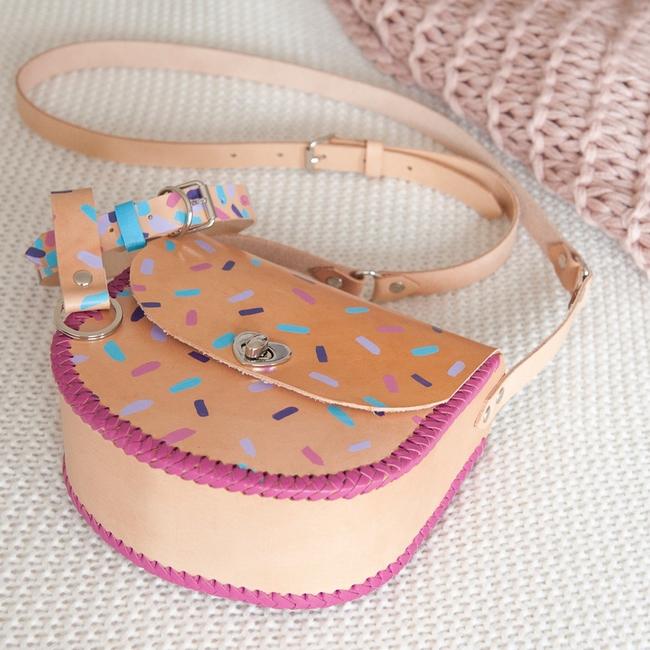
“I love making things that bring joy and that are colourful. If I’m starting a new design for an earring, I’ll design it and I’ll make it and sometimes it doesn’t work out and I might need to change the design slightly. And it’s that end process that I enjoy – you feel so proud of yourself, it might just be an earring or a brooch, but you think ‘It worked, I did it – yay!’.’’
And while she didn’t start fully exploring her creative side until she was in her 30s, Trinidad always had a passion for art.
“I loved art and art class, but I just went through the motions and did what was offered at school,” she says.
“I didn’t really experiment with my own art until later on.’’
But she believes artistic influence from her dad, as well as early encouragement from her much-loved kindergarten teachers in Tasmania – Mrs Pinkle and Mrs Hens – helped influence her artistic choices later in life.
“From the very first day, they had Spanish books ready for me, making this foreign place feel like home,’’ Trinidad recalls of her “unforgettable” teachers.

“And to top it off, one of my drawings was chosen for the school uniform. This sparked something profound within me – realisation of the boundless power of creativity. When you nurture a child’s creativity, you give them the confidence to believe they are invincible. From these beginnings, my love for lutruwita (Tasmania) and the world of artisanship began to take root.’’
She credits her dad for her own creative flair, and says their shared love of making leather items together gave her the courage to try her hand at jewellery making.
“Initially I really wanted to make leather goods,’’ Trinidad explains.
“Dad was a leathermaker back in Chile, he brought his tools with him to Tasmania and actually ran some workshops when we first arrived here. And we started making leather bags together. He has always been an artisan and I know that’s where my craft stems from.’’
While she grew up in Tasmania with some memories of her South American homeland – and also spoke Spanish at home with her parents and her two younger siblings who are both now in their late 20s – Trinidad didn’t get the chance to return to Chile with her family until she was 14, as it wasn’t safe.
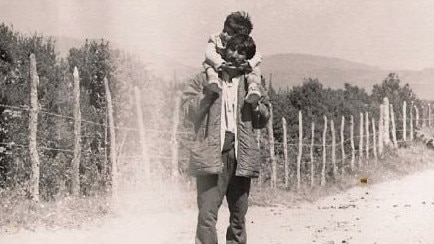
Even 10 years on from when they fled the country, she still didn’t feel safe in Chile.
She remembers staying at her grandma’s house in the Cerro Navia district of Santiago, in 1998, where huge numbers of people took to the street in protest against the actions of Augusto Pinochet, the man behind the repressive military dictatorship in Chile – from 1973 to 1990 – that saw her father previously mistreated and jailed.
After his time as president, Pinochet continued to serve as Commander in Chief of the Chilean Army until 1998 and was arrested in London later that year for human rights violations. His arrest sparked widespread global attention and international condemnation, marking a significant moment in the fight for accountability for his regime’s abuses.
Some of Trinidad’s cousins had joined the protest, however, Trinidad and her immediate family remained inside her grandmother’s house. But then tear gas was fired into the backyard and the toxic chemical weapon quickly filled the home.
“It just went through the house,’’ Trinidad recalls.
“We had to run out … we couldn't breathe, everything just burnt … you couldn’t see, you couldn’t breathe, it was horrible. My brother and sister were under two at the time.
“There were men in the bushes holding rifles ... that was the realisation for me that it was not a safe place to be.’’

Fortunately on subsequent trips back to Chile, Trinidad has always felt safe – although she hasn’t been back since the pandemic.
“Every other time it has been wonderful,’’ she says.
“I’ve seen and hung out with my (extended) family and shared memories.’’
And while she values both her South American and Australian heritage, she has sometimes found it hard to reconcile the two. However, she says making jewellery has helped her to better understand and celebrate different aspects of her life.
“I never really felt like I was from Australia, but then I went back (to Chile) and I didn’t really feel like I was from there either,’’ Trinidad explains.
“I experienced a lot of racism growing up – not at school, but in the wider community.
“It’s something people don’t really talk about, but it’s something that is there. But you can’t just remember the bad, you also have to think of all the amazing people who have helped you, and the wonderful friends you’ve made. We have a good bunch of people around us, and my parents are just awesome and they love it here.
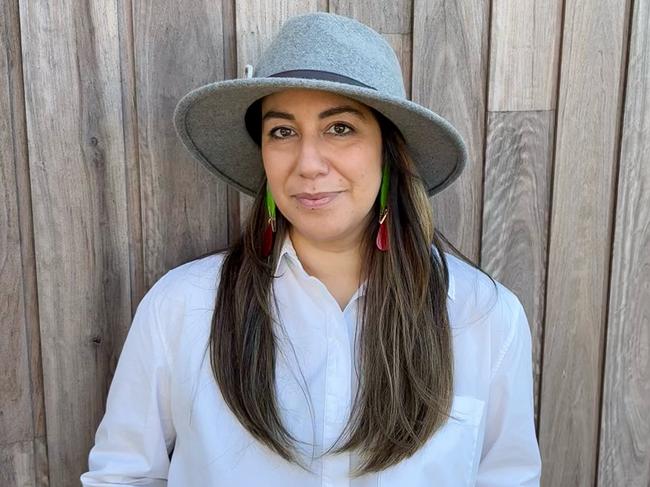
“And now I’ve had this beautiful realisation that I’m from Tassie and I love it here, I’ve got my family here and my friends – I still miss my family in Chile – but this is my place. And one thing that has helped me understand that is my art.
“Even going back to Chile – where there’s concrete and stray dogs everywhere – I come back to Tasmania and I think ‘oh my God, we’re so lucky – look at all this green, look at the mountain, look at the wildlife’.
“I’m really lucky and I need to celebrate that ... and my creativity allows me to do that.’’•
Trinidad’s Galactic Burrito jewellery is available from Salamanca Market (she’s taking a break during May but will return weekly from June 7), from local stockist Dick + Dora at Brooke St Pier and from galacticburrito.com.au You can also find her work on Instagram @galacticburritostudio

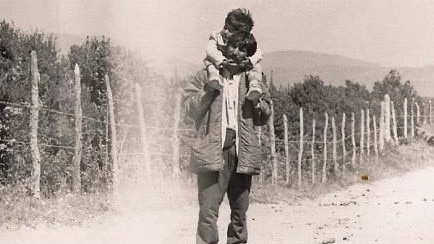
Add your comment to this story
To join the conversation, please log in. Don't have an account? Register
Join the conversation, you are commenting as Logout
Coal River vineyard dishes up quiet culinary bliss
With a striking cellar door, smart seasonal menu and standout wines this vineyard is a must-stop in the Coal River Valley. Come for the views, stay for the food and a second glass of pinot ...
‘Disneyland for foodies’: Tassie’s bold new $14m fermentation hub
Kim Seagram has been a fierce advocate for Tassie’s food and tourism sectors since relocating from Canada 30+ years ago. Now she’s opening a $14m fermentation hub to showcase Tasmanian produce to the world. SNEAK PEEK >>